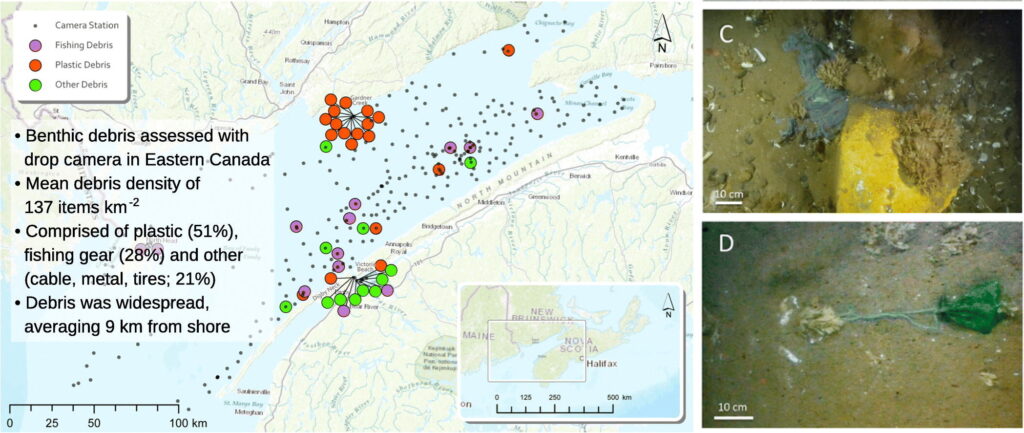
The images show a disturbing array of debris on the ocean floor: plastic shopping bags, a tire encrusted in barnacles, rubber lobster bands, garbage bags buried in sandy grit and a derelict lobster trap housing a lone moon snail.
The items were all captured on video by researchers at Dalhousie who, along with the Applied Oceans Research Group at NSCC, Fisheries and Oceans Canada and the Full Bay Scallop Association, scanned the bottom of the Bay of Fundy over a three-year period.
Their work, published in the Marine Pollution Bulletin on Nov. 14, 2019, provides the first estimate of how much garbage and fishing gear litters the ocean floor in eastern Canada and its not good.
Tony Walker, a professor in Dalhousies School for Resource and Environmental Studies and lead author Alexa Goodman, a Dalhousie researcher in the Marine Affairs Program, found 47 items of debris from 26 camera stations.
If upscaled to cover the bays 13,500 square kilometres, the team estimated there could be 1.8 million pieces of garbage on the floor of one of the regions most productive and lucrative fishing zones.
« This baseline study highlights that just because it is out of sight, benthic marine debris pollustion is still evident in the Bay of Fundy, which is such a biologically significant area, » Dr. Walker said.
It provides useful information for government and other stakeholders to develop policies and strategies to reduce sources of benthic marine pollution.
The researchers used high-powered lights and a high-definition camera that trailed behind a fishing vessel to record footage from the seafloor. The drift transects were taken at 281 different locations in the bay in 2017, 2018 and last July.
Plastic made up the majority of debris at 51 per cent, while 28 per cent was fishing gear and 21 per cent was made up of other materials, such as cables, metal and tires.
Seafloor debris in the Bay of Fundy is numerous and widespread, the paper states. And plastic debris continues to fragment into secondary microplastics.
One station found 12 garbage bags in the sand, suggesting it may be a marine dumping ground.
The findings align with similar studies in other parts of the world that found plastics to be the most prolific source of marine debris.
Italian researchers scanned the seafloor off mainland Italy, finding that plastic made up almost 70 per cent of the debris, with plastic bags the most common type of litter.
